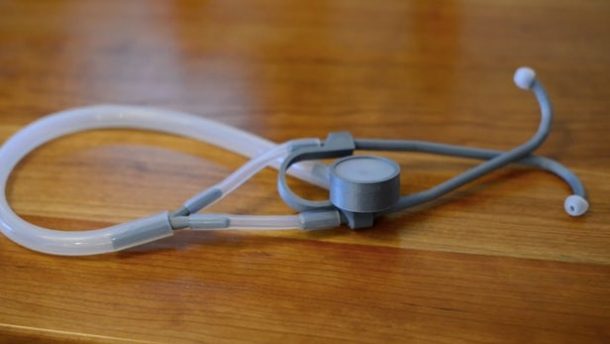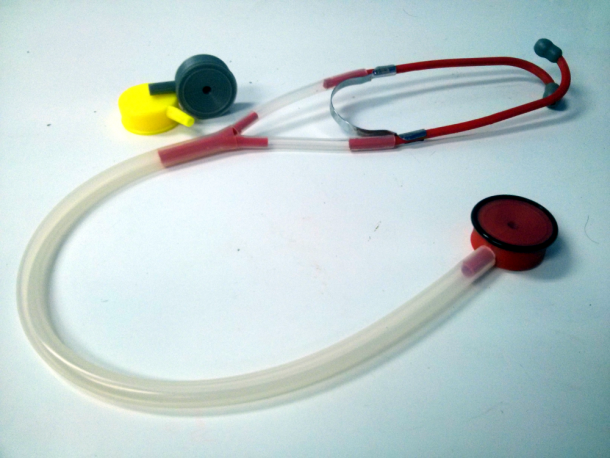Dr. Tarek Loubani travelled to Gaza to work as an ER physician. On arriving there, he found that there was a shortage of stethoscopes. He made a surprising discovery on learning that a toy stethoscope worked really well. This gave him and a team from Canada’s Western University an idea to design plastic stethoscopes that could be produced anywhere using a simple 3D printer.
The 3D printed stethoscope is known as the Glia model and it consists of just a few parts printed out of ABS plastic. It also uses inexpensive rubber tubing that is normally used in Coca-Cola machines. Provided you have access to a 3D printer, you can print a stethoscope in 3 hours and it only cost $3.

Once the 3D printed stethoscopes were tested, they were found to have the same acoustic quality as premium brand models. The team used free open-source software to design the software and hope that doctors in war-torn places short on funds will be able to access it easily and print stethoscopes for themselves.
“Stethoscope utility goes up as other resources go down,” says Loubani. “In London [Ontario], if someone gets shot, I can use an ultrasound to look inside and see if there is a life-threatening air pocket called a pneumothorax. In Gaza, ultrasounds are not available in emergency departments, or are dilapidated, so the stethoscope becomes an inexpensive tool that allows us to make life-saving decisions.”

This is an excellent initiative and will definitely help in saving many lives.


